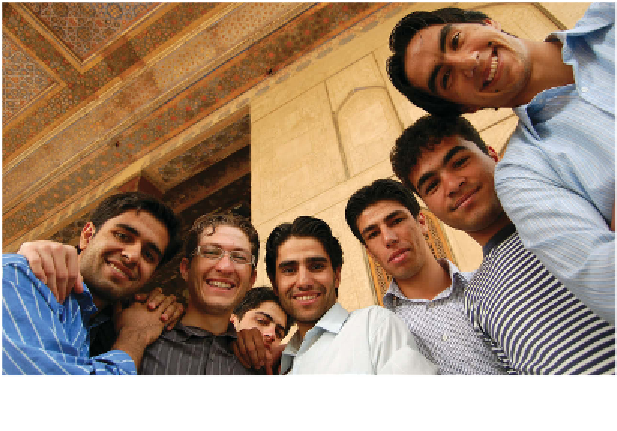Travel Reference
In-Depth Information
Routinely I'd look up from my note-taking and see Iranians gathered, curious, and
wanting to talk.
Permission to i lm somewhere was limited to a specii c time window.
Even if we were allowed to i lm a certain building on a given day, it didn't
mean we could shoot it on a dif erent day, or from the balcony of an adjacent
tea house (where we didn't have permission), or from an angle, for instance,
that showed a bank (since banks cannot be i lmed).
My critics back home skeptically predicted that our access would be
very limited—to only the prettiest sights. (Meanwhile, Iranians I met were
convinced that I'd doctor our footage to make Iran look ugly and dangerous.)
In reality, it was far less restrictive than we'd expected. Some subjects were
forbidden for reasons of security (banks, government, military) or modesty
(“un-veiled” women). But because we weren't i lming an “exposé,” we were
allowed to shoot all that we needed to—including some provocative subjects,
such as anti-American or anti-Israeli murals (more on these later).
We were free to talk to and i lm people on the street, but this was a bit
dii cult. When our camera was rolling, it reminded me of my early trips to
the USSR, when only those with nothing to lose would risk talking openly.
At other times, such as when the crew was busy setting up a shot, I was free
to roam about on my own and have fun connecting with locals. (I found that
young, educated Iranians spoke English.) I have never traveled to a place
where I had such an easy and enjoyable time connecting with people. Locals
were as confused and fascinated by me as I was by them.















































































